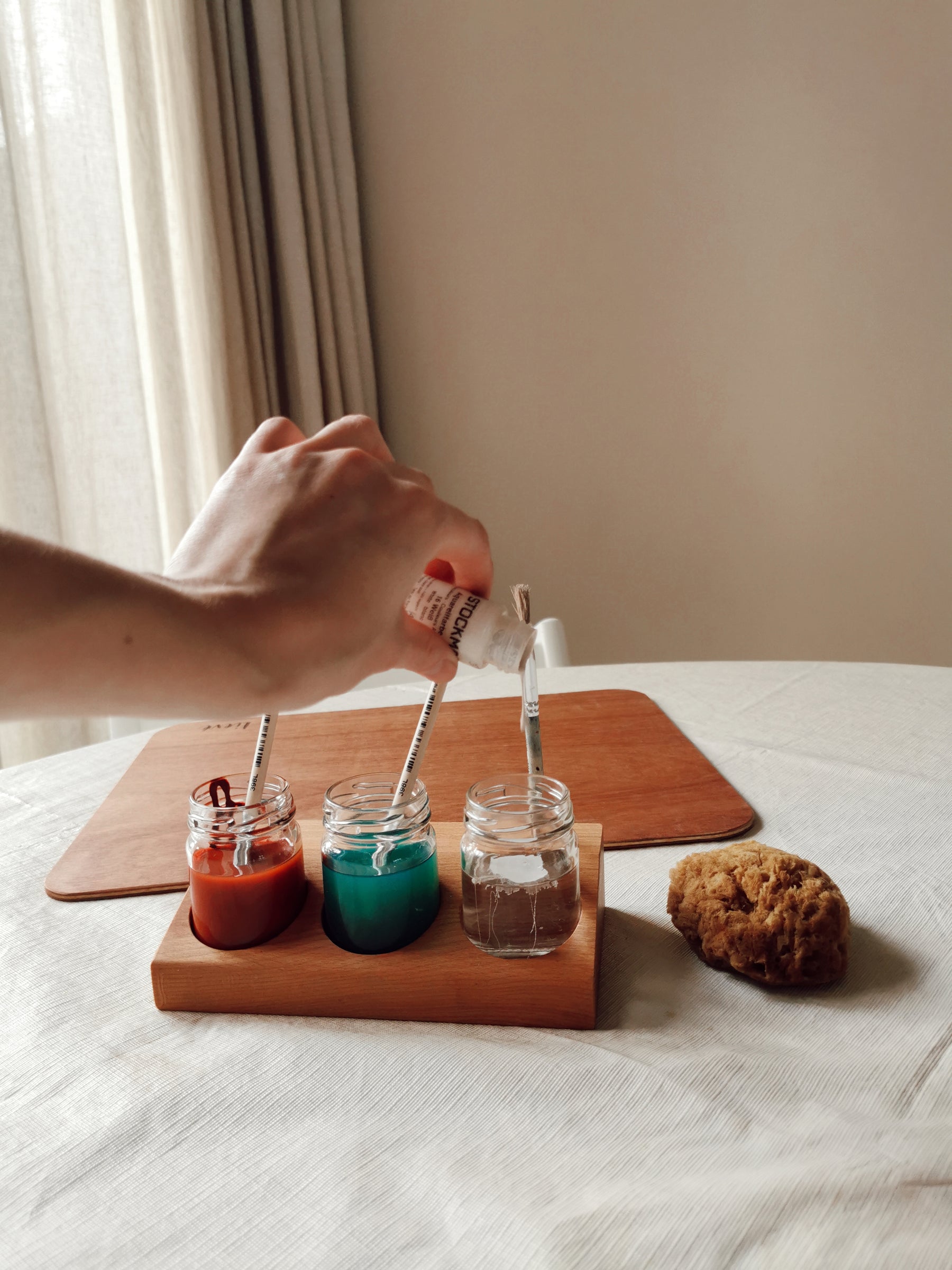
Wet in wet painting, process-oriented painting - @GroenerGroeien
Wet on wet painting, process oriented painting
Wet on wet painting is a painting technique where you paint with paint on a wet paper. The colors flow into each other, mix with each other and new shapes are created. A creative piece of work in which the entire process is a great experience, and which also touches on many development goals. But what exactly is wet in wet painting, and how do you do it?
Color experience
Painting on wet paper has a calming and relaxing effect. Children see the colors flow into each other, and see new shapes and colors emerge. Because it is difficult to draw lines and shapes when everything is flowing, children are less able to paint in a targeted manner. They will focus more on their feelings, and paint for fun and experience. This painting technique teaches children flexibility and surrender to the process. Making paintings from the feeling can give many children self-confidence.
use of color
Anyone can paint wet in wet. For toddlers, one or two (primary colors paint enough. The color experience and the experience of the material are central. Within Waldorf education, children from pre-school age work with three primary colors, possibly with double colours. Of course you can give your own interpretation.
Necessities
- Watercolor paint from, for example, Stockmar
- Therapeutic Drawing Paper
- Drawing board
- painting brush
- soft sponge
- Sealable jars and/or paint dishes
- (Glass) jar for rinsing the brush
- Tea (cloth), to pat the brush dry in between, if necessary, and to wipe off the excess paint on the board.
How do we start?
Before you can paint, you first prepare the paint by diluting it with water. By preparing the paint in sealable jars, it can also be stored later. Natural paint does start to smell after a while. You paint directly from these jars, but you prefer to use separate paint trays up to toddler age. They sometimes forget to rinse the brush between colors.
To keep the paper tight on the drawing board to get it we first wet both sides. Squeezed with a light sponge do you iron it paper then tight. If there are air bubbles in the paper arise, carefully lift it sheet of the plank and iron it tight again. During painting it may happen that the paper will crumble or even break. A less pressing hand or a grip that is too tense can help. After painting, the drawing must be placed on the plank dry, and then you have to wait for the beautiful result!

More possibilities with wet in wet painting
Because the paint does not adhere to grease (washing) chalk, experimenting with these two materials opens up many new possibilities. For example, you can make a drawing on the dry paper with (white) wax crayon and conjure it up later with the paint. A magical drawing!
You can also do it before painting, on dry land paper make prints. Just put objects or found leaves under the paper in chalk then with a firm hand on the paper.
Learning from your child
Because wet in wet children appeal to their feelings, you can learn a lot if you watch your child carefully while painting. Does the child first look at the colors and paint for effect on the wet paper† Or does the child go to work based on impulses? The reaction to working with this technique also sometimes provides insights. Does the child find it difficult to have little control or can the child lose himself more in it? In this way you get an instructive look into the inner world of the child.
Waldorf education and the materials
Within Waldorf education there are many activities that are fun but also stimulating for development. That's how it is working with beeswax a fun activity from toddler age.
We want Jelka ( @GroenerGroeien) thank you so much for writing this beautiful block. For more inspiration I would definitely take a look at her website. www.GroenerGroeien.nl - Melanie




Leave a comment